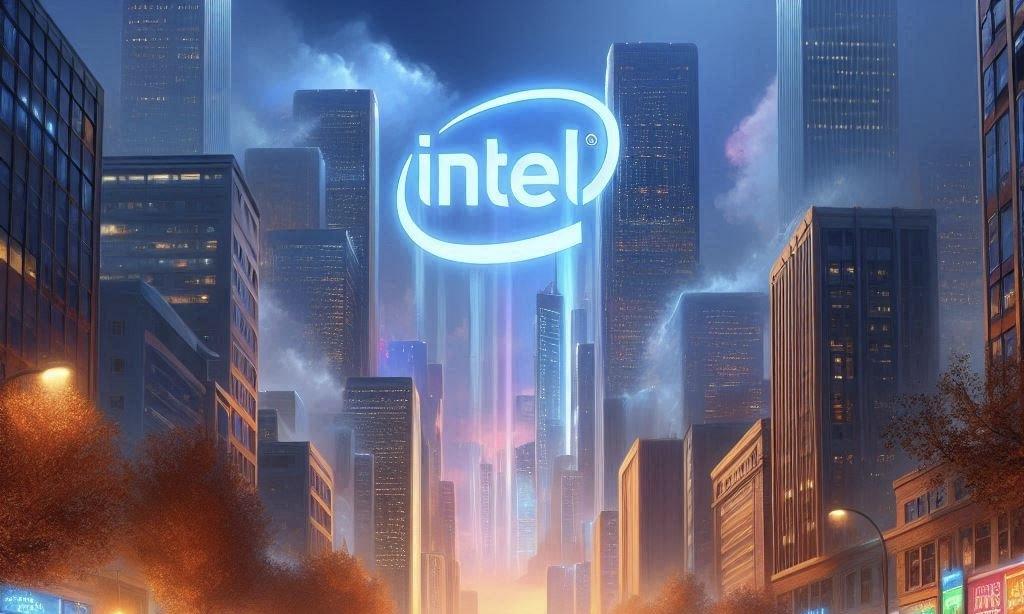Intel will cut 15,000 positions after an 85% profit drop in Q2. It is trailing AMD and Nvidia in AI chip sales. Increased investments in next-gen chips and facilities have strained its financials, but the company aims for future growth.
Intel to Cut Workforce by 15,000 After Q2 Profit Plunges 85%, Trailing AMD's AI Chip Success
Intel announced on August 1 that it intends to eliminate 15,000 positions following an 85% year-over-year decrease in second-quarter profits. According to Nikkei Asia, this announcement occurred two days after AMD's impressive earnings, bolstered by robust AI chip sales, were disclosed.
Intel has strategically increased its expenditures on developing next-generation chips and constructing its fabrication facilities in response to the intensifying competition from AMD and Nvidia in the competitive market for chips that power artificial intelligence. This strategic move has resulted in a decline in its financial performance, but it positions the company for future growth.
Intel's revenue for the three months ending June 29 was $12.8 billion, a 1% decrease from the previous year. Net income decreased by 85% to $83 million.
In contrast, AMD disclosed on July 30 that its revenue increased by 9% to $5.8 billion. The driving force behind this success was the strong AI data center processor sales, which led to a 19% increase in net income to $1.1 billion, showcasing the company's strength in this market.
In extended trading on August 1, Intel shares were down 20% from the day's closing price. AMD and Nvidia experienced a modest increase in value.
Intel to Cut 15,000 Jobs and Implement $10 Billion Cost Savings Plan to Boost Efficiency Amid Struggles in AI Market
In a news release, Intel CEO Pat Gelsinger said, "Our Q2 financial performance was disappointing, even as we hit key product and process technology milestones." Chief Financial Officer David Zinsner blamed the weak quarter on "the accelerated ramp of our AI PC product, higher than typical charges related to non-core businesses, and the impact from unused capacity."
AMD and Intel have been vying for the second position and placing bets on AI-enabled PCs as Nvidia continues to expand its lead in AI processors. However, AMD's sales have experienced significantly more robust growth in recent quarters.
In 2025, Intel intends to “increase efficiency and market competitiveness” by implementing a $10 billion cost savings plan that includes a 15% reduction in its workforce, or approximately 15,000 employees. This bold move demonstrates the company's commitment to improving its financial performance and market competitiveness.
"Our revenues have not grown as expected -- and we've yet to fully benefit from powerful trends, like AI," Gelsigner explained in a note to employees on August 1.
"Our costs are too high, our margins are too low," he continued. "We need bolder actions to address both -- particularly given our financial results and outlook for the second half of 2024, which is tougher than previously expected."



 Hyatt Expands in India Amid Rising Travel Demand and Growing Middle Class
Hyatt Expands in India Amid Rising Travel Demand and Growing Middle Class  OpenAI Secures $40B from SoftBank, Reaches $300B Valuation Amid AI Boom
OpenAI Secures $40B from SoftBank, Reaches $300B Valuation Amid AI Boom  AI Datacenter Bubble? Alibaba's Tsai Raises Red Flags Amid Soaring Investments
AI Datacenter Bubble? Alibaba's Tsai Raises Red Flags Amid Soaring Investments  Vietjet Secures $300M Aircraft Financing Deal with KKR’s AV AirFinance
Vietjet Secures $300M Aircraft Financing Deal with KKR’s AV AirFinance  Google Cuts Jobs in Android and Pixel Teams Amid AI Shift
Google Cuts Jobs in Android and Pixel Teams Amid AI Shift  Telegram Fined $80K by Moscow Court for Extremist Content Refusal
Telegram Fined $80K by Moscow Court for Extremist Content Refusal  Nvidia Faces New Hurdles in China as Energy Rules Threaten AI Chip Sales
Nvidia Faces New Hurdles in China as Energy Rules Threaten AI Chip Sales  SK Hynix Sees Chip Order Surge Ahead of Possible U.S. Tariffs, Eyes AI Memory Boom
SK Hynix Sees Chip Order Surge Ahead of Possible U.S. Tariffs, Eyes AI Memory Boom  U.S. Tariffs Threaten Wine Retailers as Import Costs Soar
U.S. Tariffs Threaten Wine Retailers as Import Costs Soar  Microsoft AI CEO Prioritizes Session Success Rate to Drive Copilot Innovation
Microsoft AI CEO Prioritizes Session Success Rate to Drive Copilot Innovation  Elon Musk’s Lawsuit Against OpenAI Heads to Jury Trial in 2026
Elon Musk’s Lawsuit Against OpenAI Heads to Jury Trial in 2026  Peru Indigenous Groups End Blockade at Glencore’s Antapaccay Copper Mine
Peru Indigenous Groups End Blockade at Glencore’s Antapaccay Copper Mine  BYD to Launch 500 Ultra-Fast EV Charging Stations in April, Doubling Tesla’s Speed
BYD to Launch 500 Ultra-Fast EV Charging Stations in April, Doubling Tesla’s Speed  OpenAI Sues Elon Musk Over Alleged Harassment and Takeover Attempt
OpenAI Sues Elon Musk Over Alleged Harassment and Takeover Attempt  CoreWeave Slashes IPO Size and Price Amid Investor Caution Despite Nvidia Backing
CoreWeave Slashes IPO Size and Price Amid Investor Caution Despite Nvidia Backing  Chevron Crude Shipments from Venezuela Halted Amid U.S. Sanctions Shift
Chevron Crude Shipments from Venezuela Halted Amid U.S. Sanctions Shift  BlackRock Q1 Profit Dips Amid Market Volatility and Rising Costs
BlackRock Q1 Profit Dips Amid Market Volatility and Rising Costs 






























